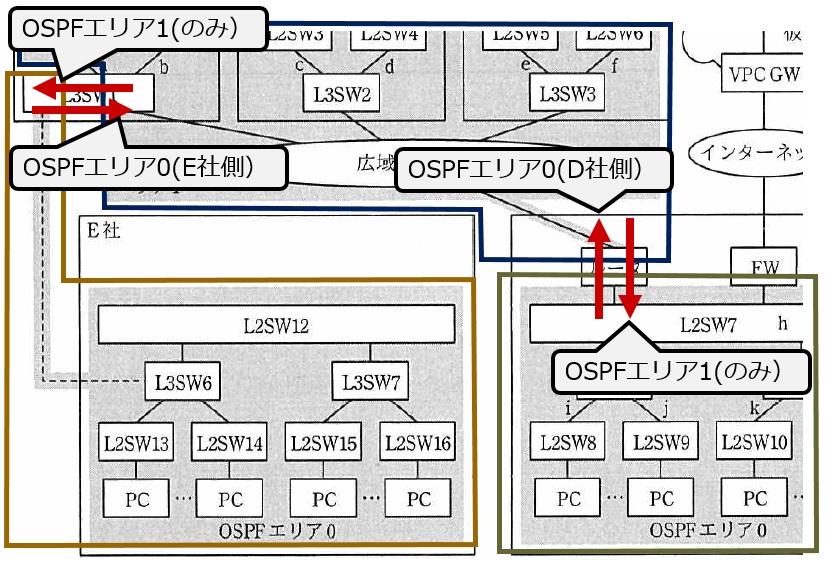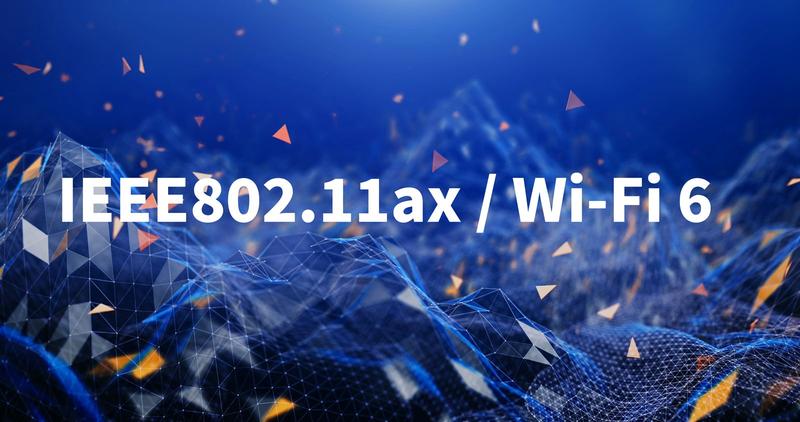Reiwa 3rd Afternoon II Exam Q1 Explanation of "Problems related to major network technologies and renewal work"
Introduction
This time, I will explain about Question 1 of the Reiwa 3rd Year Network Specialist Afternoon II Examination. You can download the exam questions here. Afternoon II exam has a lot of questions and questions, and it takes time to answer, but please take the time to challenge yourself.
Afternoon II Explanation of Exam Question 1
Question 1 has a wide range of questions related to major network technologies such as STP / RSTP, stack function, and link aggregation, and work related to network renewal. If you check the structure of the question sentence in Question 1, it consists of a paragraph separated by six brackets ([]) in addition to the general explanation at the beginning. There are more paragraphs than the afternoon I exam, and the topics covered in each paragraph may change significantly, so be careful not to overlook the content or flow of topics.
Table 1: Paragraph name and start location of Q1
| Paragraph name | Starting place |
|---|---|
| Overview of in-house system | Page 2, line 6 |
| Current internal NW survey | Page 4, line 6 |
| Method using RSTP | Page 5, line 26 |
| Method using the stack function of the switch | Page 7, line 6 |
| Configuration design of new in-house system | Page 7, line 19 |
| Considering migration to a new in-house system | Page 8 Line 1 |
Then, I will explain questions 1 to 6.
Explanation and answer example of Question 1 (1)
It's a fill-in-the-blank issue with DNS and VRRP. As usual, the answer is derived from the surrounding sentences.
Question 1 (2) Explanation and answer example
It is a problem to think about the information notified by the DHCP server. On page 3, line 21, it is stated that "the information of the IP address of the name resolution request destination is notified to the PC". Since the device to which the name resolution request is made is the DNS server, check the device name of the DNS server used by the PC. This is described on page 3, lines 6 to 8 as "Internal DNS server transfers (omitted)", and it can be read that the PC uses the internal DNS server. Therefore, the answer is [internal DNS server]. Don't overlook answering the question with the "device name in Figure 1".
Explanation and answer example of Question 2 (1)
This is a problem related to STP root bridge election. The root bridge is determined by the value of the 64-bit bridge ID, which is the concatenation of the upper 16-bit bridge priority value and the lower 48-bit MAC ads. Therefore, if the bridge priority values are the same, the device with the smaller MAC address is elected as the root bridge.
Also, if L2SW3 is elected as the root bridge, the link between L3SW1 and L3SW2 will not be able to communicate due to the blocking state. If you check the 13th to 16th lines on page 3, you can pass VLAN10, VLAN11, and VLAN101 to 103 between L3SW1 and L3SW2, but you can only pass VLAN101 to VLAN103 between L2SW3 and each L3SW. In other words, VRRP information cannot be exchanged between VLAN10 (subnet between FW and L3SW) and VLAN11 (internal server accommodation subnet). Therefore, the answer to be compared is [MAC address], and the subnets are [FW-L3SW subnet] and [Internal server accommodation subnet]. Be careful not to overlook the condition "Please answer all using the subnet name in Figure 1" for this question as well.
Figure 1: Communication flow when L2SW3 is elected as the root bridge in Figure 1.
Explanation and answer example of Question 2 (2)
This is a fill-in-the-blank question about the basic mechanism of STP.

Explanation and answer example of Question 3 (1)
This is a problem with the operation of RSTP. RSTP has a mechanism to quickly restore communication even if the topology changes, one of which is a mechanism to exchange proposals and agreements (handshake). In this mechanism, when the topology changes and the upper switch is unknown, the link is changed to the specified port and the proposal BPDU is exchanged. Then, the received bridge priority value and path cost information is compared with its own information, and if the opposite side determines that it is a higher-level switch (bridge priority value or path cost is small), an agreement is sent and the designated port is the root port. Change to. In this way, it quickly transitions to a communicable state. Therefore, the answer example is [upper switch].
Explanation and answer example of Question 3 (2)
This is a problem with the function of RSTP. The mechanism for realizing the situation in the underlined part ③ is described in Tables 3 and (1) to (4) on page 6 from line 9 to page 7 on line 3. I will consider the answer with reference to these. An example of the answer is [because the alternative port in case of port failure is determined in advance] [because there is no transfer delay and the port state transition is performed]. Since it is necessary to answer the general RSTP function by referring to the text, it is considered that there are many cases where the answer is correct even if it is not described according to the answer example.
Explanation and answer example of Question 4 (1)
This is a problem with the stack function of the switch. As described on page 7, lines 10 to 11, the stack function refers to the function of connecting multiple devices with a stack cable and treating them as one logical device. The question asks for a reason why the operational load can be reduced, but this is because the new L3SW1 and the new L3SW2 are treated as one of the stack L3SW, and the underlined part ④ "Switch information collection and configuration management, etc." I think about it in connection with "maintenance and management". Therefore, an example of the answer would be [because two L3SWs can be managed as one switch].
Explanation and answer example of Question 4 (2)
It is a problem to search the figure for the section where the line bandwidth is effectively used by the stack function. There is a link aggregation function as a function that realizes effective use of line bandwidth. Since this function is set between the stack L3SW and the new L2SW, the line bandwidth can be used effectively. Therefore, if you search for another section where the link aggregation function is used from Fig. 3 on page 8, that will be the answer. Therefore, the answer is [Stack L3SW ~ New Directory Server] or [Stack L3SW ~ New Internal DNS Server].
Figure 2: Section where the stack L3SW and line bandwidth in Figure 3 on page 8 can be effectively used.
Explanation of Question 5 and answer example
It is a problem to compare the features of network technology. With STP and RSTP, you can achieve both the function of making the line redundant and the function of preventing the loop of the (L2) link. For these functions, in the configuration shown in Fig. 3 on page 8, the line is made redundant by the stack function and link aggregation. Note that the stack function and link aggregation cannot realize the function to prevent link loops, but there is no problem because the configuration does not have link loops in Fig. 3 (link aggregation is a logic of multiple physical cables in one logic. The loop is not configured because it is treated as a typical cable). I will answer these together. Therefore, the answers of the two techniques are [Stack] and [Link Aggregation], and the answer example of the reason is [Because there is no loop].
Explanation and answer example of Question 6 (1)
It is a problem to consider the communication flow in Figure 4 on page 9. If you check the route from the current directory server to the new directory server in Figure 4, you can see that it goes through L3SW1 and the stack L3SW. Also, if you check the VLAN information, you can see that the current directory server belongs to VLAN11 from Table 1 on page 4, and the new directory server also belongs to VLAN11 from Table 5 on page 10. Although it goes through L3SW, you can see that the current directory server and the new directory server belong to the same segment and can send and receive data to and from each other at the L2 level. Therefore, the answer for the source MAC address is [current directory server], and the answer for the destination MAC address is [new directory server].
Figure 3: Communication from the current directory server to the new directory server (combining Figure 1 on page 2 and Figure 4 on page 9)
Explanation and answer example of Question 6 (2)
It is a problem to consider the communication flow in Fig. 4 on page 9. The idea is the same as (1). From Figure 1 on page 2, it can be seen that the current PC belongs to any of VLANs 101 to 103, and from Tables 5 and 6 on page 10, the new FW1 and new FW2 are VLAN10, and the new public Web server is VLAN. It can be read that it is none. From this information, it can be seen that the communication between the current PC and the newly published Web server is routed from VLAN101 to VLAN103 → VLAN11 → VLAN10 → network without VLAN. That is, the MAC address of each L3SW is used for communication flowing between the current L3SW1 and the stack L3SW. Therefore, the answer for the source MAC address is [current L3SW1], and the answer for the destination MAC address is [stack L3SW].
Figure 4: Communication from the current PC to the newly published Web server (Figure 1 on page 2 and Figure 4 on page 9 are combined)
Explanation and answer example of Question 6 (3)
The problem is to find the IP address that can be assigned to the newly published web server. From the underlined part ⑧ on page 9 and Table 5 on page 10, you can see that the newly published Web server belongs to the network of 172.16.254.0/24. 172.16.254.0/24 can be seen in Table 1 on page 4, but it is used by public web servers and external DNS servers on the current network (using the range 172.16.254.10 to 172.16.254.100).
As shown in Figure 4 on page 9, the new public web server exists in the network via the stack L3SW, new FW1 and new FW2, so it is necessary to distribute and route the communication to the current public web server and the new public web server. there is. This routing information can be found in Tables 6 and 7 on page 10. Specifically, it is the information of the destination network address / subnet mask (172.16.254.128/25) described in the first row of stack L3SW1 in Table 6 and FW1, FW2 and L3SW1 and L3SW2 in Table 7. Because of this static routing information, the routing of L3SW1, L3SW2 → stack L3 switch → new FW1 and new FW2 is realized. The range of 172.16.254.128/25 is from 172.16.254.128 to 172.16.254.254, so the answer is [172.16.254.128 to 172.16.254.254]. Since 172.16.254.255 is a broadcast address, it will be excluded when replying.
Explanation and answer example of Question 6 (4)
It is a problem to consider the purpose of system switching work. In the underlined part ⑨, the LAN cable between the current FW1 and FW2 and L2SW1 and L2SW2 is unplugged, so consider this effect. Focusing on the default gateway part such as the public Web server in Table 1 on page 4, you can see that the interfaces on the L2SW1 and L2SW2 sides of FW1 and FW2 use the virtual IP address of 172.16.254.1.
Focusing on the default gateway part such as the new public Web server in Table 5 on page 10, the interface on the new L2SW1 and new L2SW2 sides of the new FW1 and new FW2 also uses the virtual IP address of 172.16.254.1. Therefore, if you connect the networks as they are, 172.16.254.1 will be duplicated. Therefore, work on the underlined part ⑨. By doing this, 172.16.254.1 of FW1 and FW2 becomes unused, and 172.16.254.1 of new FW1 and new FW2 can be used without duplication. Therefore, the answer example is [The virtual IP addresses of the current FW and the new FW overlap. ] And so on.
Explanation and answer example of Question 6 (5)
As with (4), it is a problem to consider the contents of system switching work. By setting the underlined part ⑩ on page 11, the flow of communication from the Internet to the current public Web server is Internet → New Router 1 → New L2SW0 → New FW1 → New L2SW1 → L2SW1 → Public Web Server. In addition, on page 10, lines 1 to 3 state that "(Omitted) static NAT is set for new FW1 and new FW2." Therefore, in order to switch the communication from the Internet from the new public Web server to the current public Web server, it seems that it can be realized by changing the static NAT information registered in the new FW1 and new FW2.
Therefore, the answer example of the changed content is [Change the IP address after conversion of static NAT from the new public Web server to the IP address of the current public Web server], and the answer example of the device that goes through is [New router. 1 → new L2SW0 → new FW1 → new L2SW1 → L2SW1] and so on. In addition, since there is a description on page 9, line 17 that "new FW1 and new FW2 are operating in the active / standby state", it is not necessary to describe as a device that goes through FW2.
Figure 5: Communication flow from the Internet to the Web server (Figure 1 on page 2 and Figure 4 on page 9 are combined)
Explanation of Question 6 (6) and answer example
It is a problem to consider the log that can be confirmed with the new FW. The 2nd to 4th lines of the question are described as "New public Web server (abbreviation) It is assumed that it is not recorded." This seems to be a hint. When a client on the Internet accesses a Web server, it usually specifies the FQDN (Fully Qualified Domain Name) as the destination, so the communication that performs name resolution by DNS first occurs. This communication takes place with the new public DNS server. Then, the client on the Internet communicates on the Web to the IP address obtained by name resolution. This communication takes place with the newly published web server. There are two communications required for the question, so I will answer them all together. Examples of answers are [Web communication to the new public Web server] and [DNS communication to the new public DNS server].
Explanation of Question 6 (7) and answer example
It is a problem to think about the IP address that should be set in the stack L3SW. The IP address information used by L3SW1 and L3SW2 and the stack L3SW in the VLAN interface of VLAN11 can be found from the next hop information of the second row of the stack L3SW in Table 6 on page 10 and the next hop information of L3SW1 and L3SW2 in Table 7. It can be read. Specifically, 172.17.11.1 is assigned to L3SW1 and L3SW2, and 172.17.11.101 is assigned to the stack L3SW. Then, by performing the configuration change work described before and after [g], the information such as the IP address assigned to L3SW1 and L3SW2 will be deleted.
However, if nothing is done, the new directory server and new internal DNS server that use 172.17.11.1 as the default gateway will not be able to communicate. To avoid this, you need to assign 172.17.11.1 to the stack L3SW. Therefore, the answer is [172.17.11.1]. The 172.17.11.101 used by the stack L3SW uses only L3SW1 and L3SW2, so it is not necessary to keep it. Therefore, the change work is to change 172.17.11.101 to 172.17.11.1.
Explanation of Question 6 (8) and answer example
There is a problem with the role of the DHCP gidadr field. giaddr (Gateway IP Address) is used as a field to identify the source network address when the DHCP relay agent is used in the exchange of DHCP packets. It usually contains the IP address of the interface on which the DHCP relay agent received the DHCP packet. The DHCP server determines the scope and IP address to assign by checking the giaddr. Therefore, an example answer would be [to identify the subnet in which the PC is housed and assign an IP address from the corresponding DHCP scope].
in conclusion
This time, I picked up and explained Question 1 of the Afternoon II Examination in Reiwa 3rd year. Compared to the afternoon I exam, the afternoon II exam has more question sentences and questions, and it tends to take longer to find the information necessary for answer creation from the sentences. Therefore, the exam time is 2 hours, but if you spend too much time reading the question sentences, it is quite possible that you will run out of time. Before the exam, it is a good idea to work on some past questions, check the time allocation, and practice organizing the read information.
Next time, I will take up the idea and solution of Reiwa 3rd Afternoon II Examination Question 2.
Tweet Information-Technology Engineers Examination / Network Specialist / Afternoon II / IPA Previous Article 4th Reiwa 3rd Afternoon I Examination Q3 Explanation of "Problems related to network settings and design" Author Hiroshi Kato List of articles by this author List of articles NEC Management Partner Co., Ltd. Human Resources Development Service Division Joined NEC Corporation in 2001. He belongs to the education department after working in the sales promotion department of network equipment. He is mainly in charge of training in the network area. As an instructor, he strives to develop human resources both inside and outside the company, and is also in charge of training development, revision and maintenance.Serialization back number
Qualification / Examination Technique Explanation 5thReiwa 3rd Afternoon II Exam Q1 Explanation of "Problems related to major network technologies and renewal work"
2022/2/24 Read more Qualification / Examination Technique Explanation 4thReiwa 3rd Afternoon I Exam Q3 Explanation of "Problems related to network settings and design"
2022/1/21 Read more Qualification / test technique explanation 3rdReiwa 3rd Afternoon I Exam Q2 Explanation of "Problems related to network integration"
2021/12/10 Read moreThink IT e-mail magazine member registration is being accepted
Think IT provides a distribution service for the e-mail newsletter "Think IT Weekly", which is packed with technical information. If you register as an e-mail newsletter, you will be able to receive not only e-mail newsletters but also various limited benefits.View the services provided by Think IT e-mail magazine members


![[Osaka Marriott Miyako Hotel] Plenty of cheese! Italian buffet held company release | Nikkan Kogyo Shimbun electronic version](https://website-google-hk.oss-cn-hongkong.aliyuncs.com/drawing/article_results_9/2022/3/28/1061eb31530c979d7b766ae1877b113a_0.jpeg)




